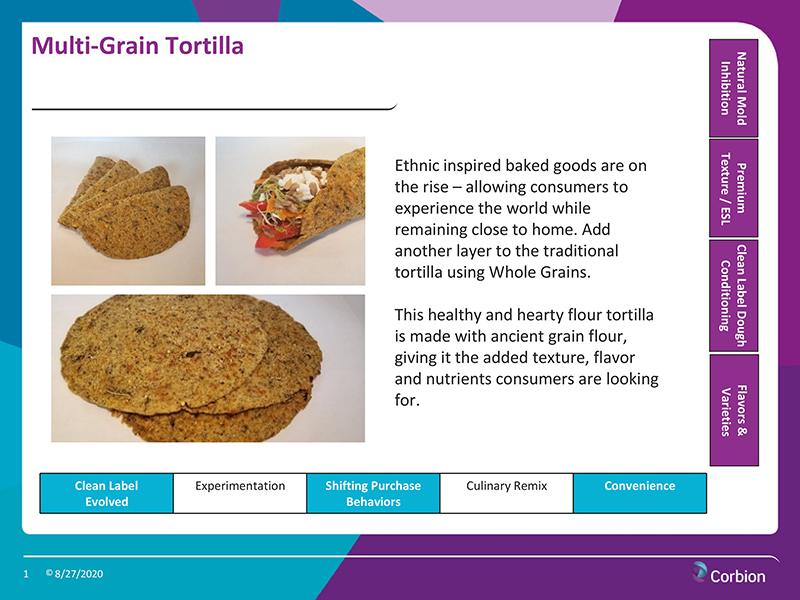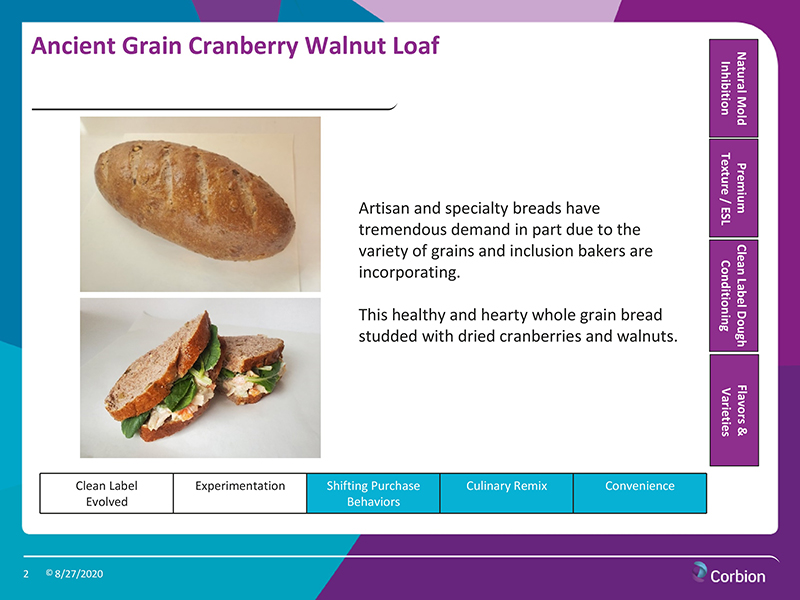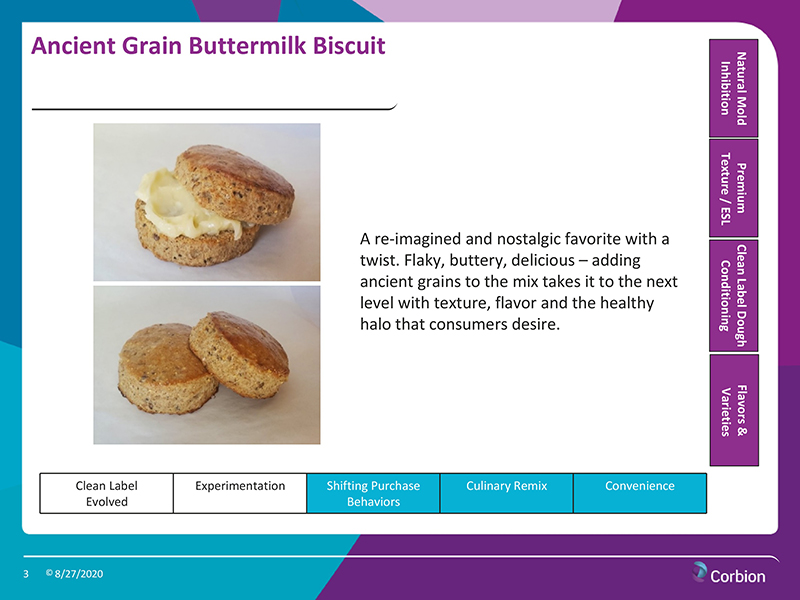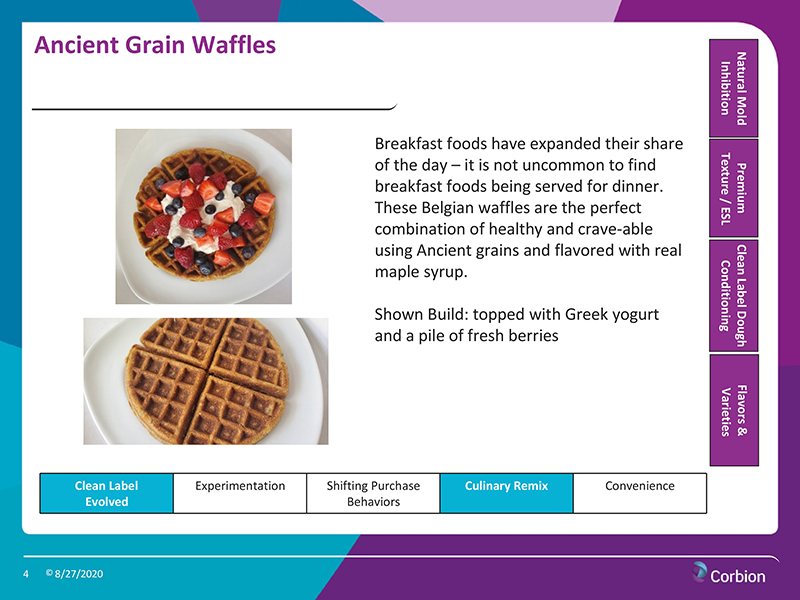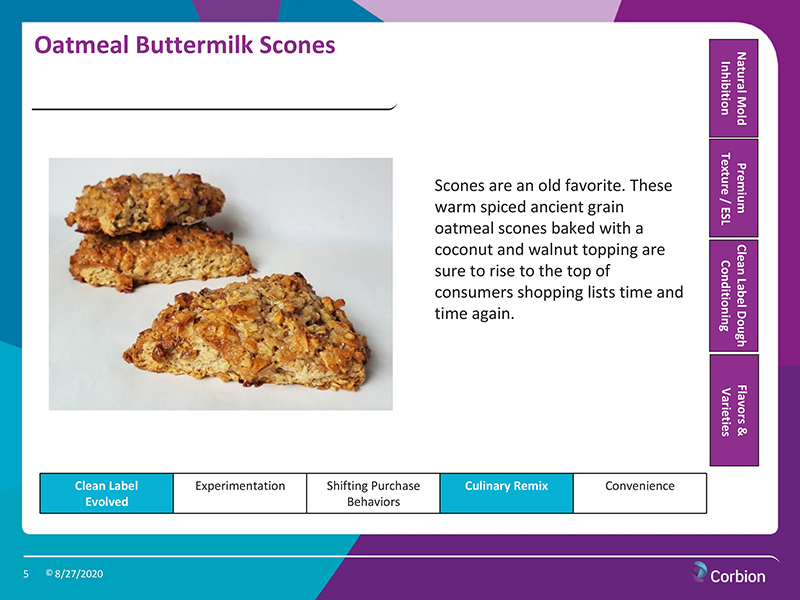September is National Whole Grains Month. This year, the timing couldn’t be better.
Demand for whole and ancient grains has risen steadily in recent years, and COVID has only intensified that growth, according to the Whole Grains Council.
And as shopping habits are shifting — pandemic or no pandemic — so are consumers’ demands of the foods they buy, said Kathy Sargent, Director of Global Market Strategy for Lenexa, Kan.-based Corbion.
That’s affecting demand not just for whole and ancient grains but for all better-for-you bakery items.
“We’re seeing a move from simple scrutiny of the ingredient label, to shoppers wanting food with a purpose and those that offer specific health benefits,” Sargent said. “While it’s a given that consumers want great food with good taste, texture and value, when it’s paired with these great health perks too, they can give themselves permission to purchase an item.”
Consumers love baked goods like breads and rolls, but they also want to know they’re getting something that’s good for them in addition to tasting good.
When bakers can work whole and ancient grains into their products, Sargent said, they win over those consumers with baked goods that are better for them than traditional breads and rolls.
Price, taste, clean label
The increase in demand for whole and ancient grains and better-for-you in general can be traced in large part to three factors, according to the Whole Grains Council: the clean label trend, more competitive pricing and a greater emphasis on taste.
Council consumer research from 2018 found that two out of three consumers reported that of the grain-containing foods they ate, at least half of those foods featured whole grains, and 89% reported that the top reason they chose whole grains was because of the health benefits associated with them.
Consumers are paying more attention to labels and ingredients in the foods they eat, and more are aware of the health benefits whole grains can provide.
And manufacturers are starting to respond to these demands, by creating foods that contain more whole grains.
The number of grain-based food launches have grown 58% since 2011, and breads featuring ancient grains have grown almost 32% in the past five years, according to council data.
And an NPD Group survey found that 52% of respondents said they wanted to add more whole grains to their diets to achieve their wellness goals.
Ancient grains are gaining momentum as well, popping up on menu items and in items across the grocery store.
In fact, about 11% of all products that carry the Whole Grain Stamp now contain quinoa, though the majority of these foods are much more likely to contain whole grains like whole wheat and oats.Millet, sorghum, farro and amaranth and (for those who have actually tried it) fonio are other ancient grain favorites.
Ancient grains might be getting more of the media spotlight than whole grains these days, but consumers are more familiar with whole grains and foods that contain them. When asked to name their favorite whole grains, however, consumers identified whole wheat, oats, corn and brown rice.
The most popular whole grains can be traced to the foods that are most popular with consumers, such as bread, pasta, cereal, crackers and tortillas, Sargent said. Whole wheat, oats, corn and brown rice are the varieties most associated with those favorites.
The right tools for the job
With so many people now focused on their overall health and wellness and reading ingredient labels, it’s apparent that whole and ancient grains are uniquely positioned to fulfill these needs for consumers, Sargent said.
Adding extra grains to baked goods used to be a difficult, time-consuming process. To change that, Corbion sought to find a quick, turnkey solution to help bakers. The company developed grains that are pretreated and ready for immediate use, containing just the right moisture balance to keep breads moist and fresh.
“These versatile, easy-to-use grains can be added directly into existing formulas or right on top before baking, in order to provide a simple way to create new varieties of baked goods without the expense of reformulation,” Sargent said.
The result is an attractive artisan-style baked good that features delicious flavor and irresistible crunch.
Corbion’s selection of premixed grains also allows bakers a convenient method to customize the flavor, texture and appearance of baked goods, with varieties that offer up to eight different grains in one blend. They are easily added during formulation or sprinkled on top of bread dough before baking to enhance the look and feel of any baked good.
To solve for many of the difficulties of working with whole grains, Corbion also offers a wide range of products that address everything from dough strength to extended shelf life and freshness.
Whatever the challenge, Corbion has a solution to help bakers capitalize on surging demand for whole and ancient grains.



